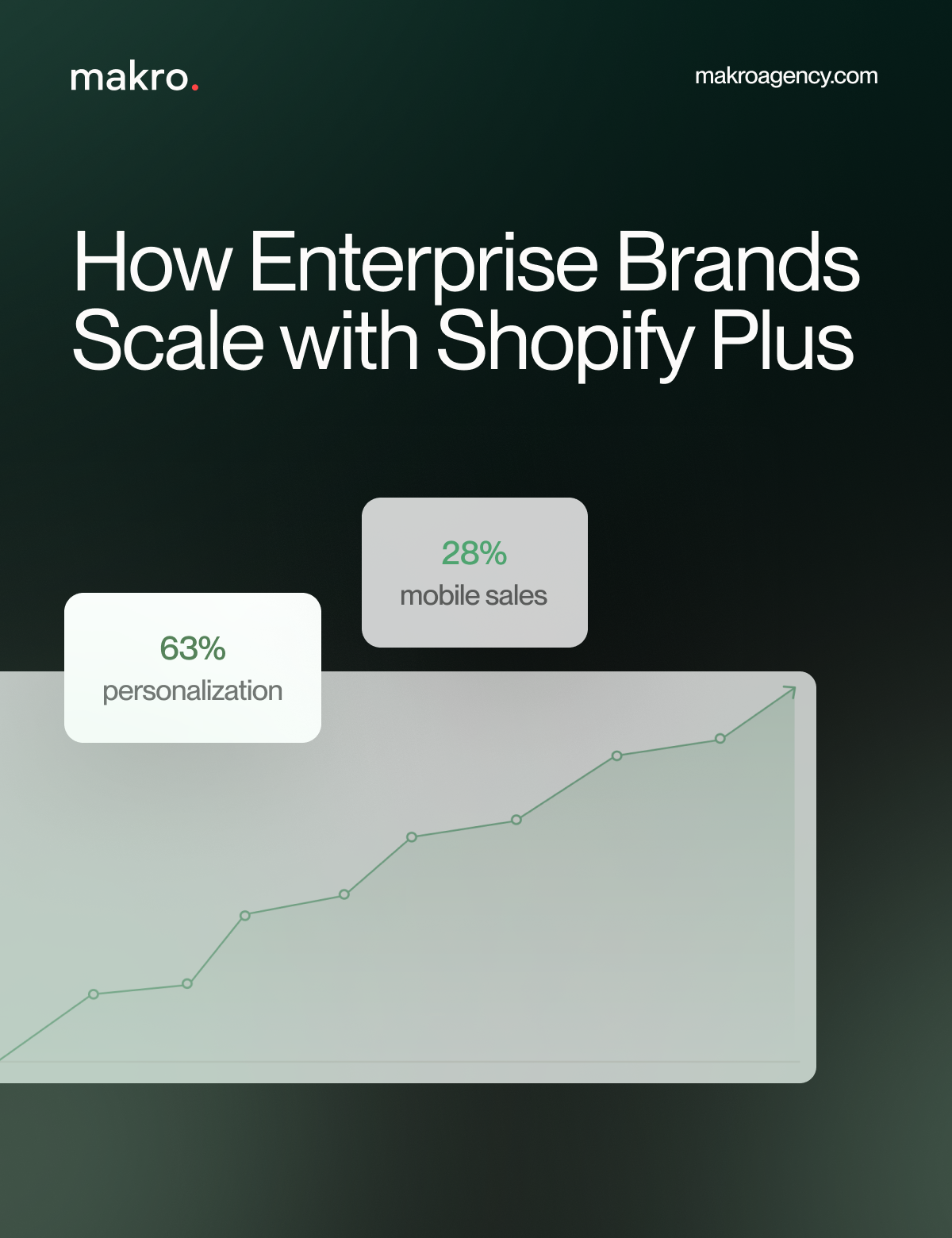Exploring Headless Architecture in Shopify: 5 Benefits for Your Online Store
Businesses are constantly on the lookout for innovative ways to stand out in a crowded digital landscape. One of the most transformative approaches gaining momentum is headless commerce. In this blog, we’ll discuss what headless architecture is, and how it can benefit your Shopify store, and explore how this modern approach can lead to improved performance, flexibility, and customer experience.
What is Headless Architecture in Shopify?
At its core, headless commerce is a decoupled approach where the front end (the "head") is separated from the back end of an e-commerce platform. This means that the user interface (UI) layer and the back-end functionality (such as product management, order processing, and inventory management) are not tightly bound together. In a traditional e-commerce setup, the front end and back end are typically tied together in a monolithic fashion, meaning changes to the front end often require backend adjustments as well.
In a headless architecture, the back-end (Shopify’s core system) and front-end (the website or app that customers interact with) are independently connected via APIs. This gives businesses the freedom to create unique and customized experiences across various touchpoints without being restricted by a predefined structure. This separation enables businesses to be more agile, responsive, and adaptable in an ever-changing market.
5 Key Benefits of Headless Architecture for Shopify Stores
1. Complete Customization and Flexibility
With traditional e-commerce setups, you're generally bound by the constraints of the platform's built-in themes and templates. But with a headless Shopify store, you have the freedom to create a fully customized front end. You’re no longer limited to pre-built themes or layouts, allowing you to design a unique experience tailored specifically to your brand and customers’ preferences.
This level of flexibility allows your development team to experiment with creative elements, creating engaging designs and user interfaces that stand out. Whether it’s a unique checkout flow or a highly interactive product page, headless commerce empowers businesses to push the boundaries of creativity.
2. Omnichannel Experience
One of the most significant advantages of a headless approach is the ability to seamlessly integrate with multiple channels. Whether you’re selling on a website, mobile app, social media platforms, or in physical stores, headless commerce enables you to deliver a consistent experience across all touchpoints.
Shopify’s API can power your content and product catalog across various platforms and channels, ensuring that customers get a unified experience no matter where they interact with your brand. This is particularly valuable as the trend towards omnichannel retail grows, where customers expect a seamless experience across different devices and platforms.
3. Faster Load Times and Improved Performance
A fast-loading website is critical for both user experience and SEO performance. Headless architecture allows you to optimize your store for speed by delivering content and data only when necessary, which can significantly reduce load times.
By decoupling the front end from the back end, headless stores can load pages faster since you can streamline how data is fetched and displayed. Additionally, this architecture allows developers to leverage modern technologies like progressive web apps (PWAs) and content delivery networks (CDNs) to optimize performance even further.
Faster load times directly translate to better user experiences, higher conversion rates, and improved SEO rankings. This is essential in today’s fast-paced e-commerce environment, where every second counts.
4. Enhanced Scalability
As your business grows, so do your technical requirements. Traditional monolithic systems can become cumbersome and slow down as your store adds more products, users, and traffic. With headless architecture, however, you can scale more easily.
Since the front end and back end are separate, you can update and scale each part of your store independently without worrying about disrupting the other. For instance, if your store sees a surge in traffic, you can focus on optimizing the back end or deploying additional resources to handle the load, without needing to rework the entire front-end design or functionality.
This scalability ensures that your Shopify store can grow seamlessly as your business expands, accommodating more products, users, and features without significant delays or downtime.
5. Future-Proofing Your Store
E-commerce trends and technologies evolve rapidly, and staying ahead of the curve is vital to maintaining a competitive edge. With headless Shopify architecture, your business can future-proof itself by integrating with new technologies and platforms as they emerge.
Since the front end is decoupled from the back end, it’s easier to integrate with new tools, systems, and third-party applications. Whether it’s adopting the latest e-commerce technology, adding an AI-powered recommendation engine, or connecting to an IoT device, a headless system allows for easier integration with future innovations, ensuring your store stays relevant and competitive.
Furthermore, you won’t have to overhaul your entire platform when new trends emerge. Instead, you can implement new features as needed, keeping your online store dynamic and adaptable.
Boost performance and user experience with headless Shopify
Headless architecture offers a wealth of benefits for Shopify merchants, from improved customization and flexibility to enhanced scalability and future-proofing. By embracing this innovative approach, you can create a highly tailored, high-performance, and omnichannel shopping experience that sets your business apart from the competition.
If you’re considering a move to headless commerce or want expert guidance in implementing this architecture for your Shopify store, Makro Agency is here to help. Our team of e-commerce specialists is experienced in building robust, scalable, and future-proof solutions for enterprise businesses, ensuring your store operates at peak performance. Contact Makro Agency today and let us help you unlock the full potential of headless Shopify architecture for your online store!











.png)
.png)





















































.png)

.png)



.png)

.png)


